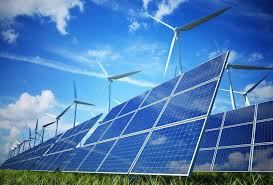The energy industry is the totality of all of the industries involved in the production and sale of energy, including fuel extraction, manufacturing, refining and distribution. Modern society consumes large amounts of fuel, and the energy industry is a crucial part of the infrastructure and maintenance of society in almost all countries.
In society and in the context of humanities, the word energy is used as a synonym of energy resources, and most often refers to substances like fuels, petroleum products and electricity in general. These are sources of usable energy, in that they can be easily transformed to other kinds of energy sources that can serve a particular useful purpose.
Energy Development
Energy development is a field of endeavor focused on making available sufficient primary energy sources and secondary energy forms to meet the needs of society. These endeavors encompass those which provide for the production of conventional, alternative and renewable sources of energy, and for the recovery and reuse of energy that would otherwise be wasted.
Hydroelectricity is the term referring to electricity generated by hydropower; the production of electrical power through the use of the gravitational force of falling or flowing water. It is the most widely used form of renewable energy, accounting for 16 percent of global electricity generation – 3,427 terawatt-hours of electricity production in 2010, and is expected to increase about 3.1% each year for the next 25 years.
Wind (primary renewable natural) power harnesses the power of the wind to propel the blades of wind turbines. These turbines cause the rotation of magnets, which creates electricity. Wind towers are usually built together on wind farms. There are offshore and onshore wind farms. Global wind power capacity has expanded rapidly to 336 GW in June 2014, and wind energy production was around 4% of total worldwide electricity usage, and growing rapidly.
A biofuel is a fuel that contains energy from geologically recent carbon fixation. These fuels are produced from living organisms. Examples of this carbon fixation occur in plants and microalgae. These fuels are made by a biomass conversion (biomass refers to recently living organisms, most often referring to plants or plant-derived materials). This biomass can be converted to convenient energy containing substances in three different ways: thermal conversion, chemical conversion, and biochemical conversion.

